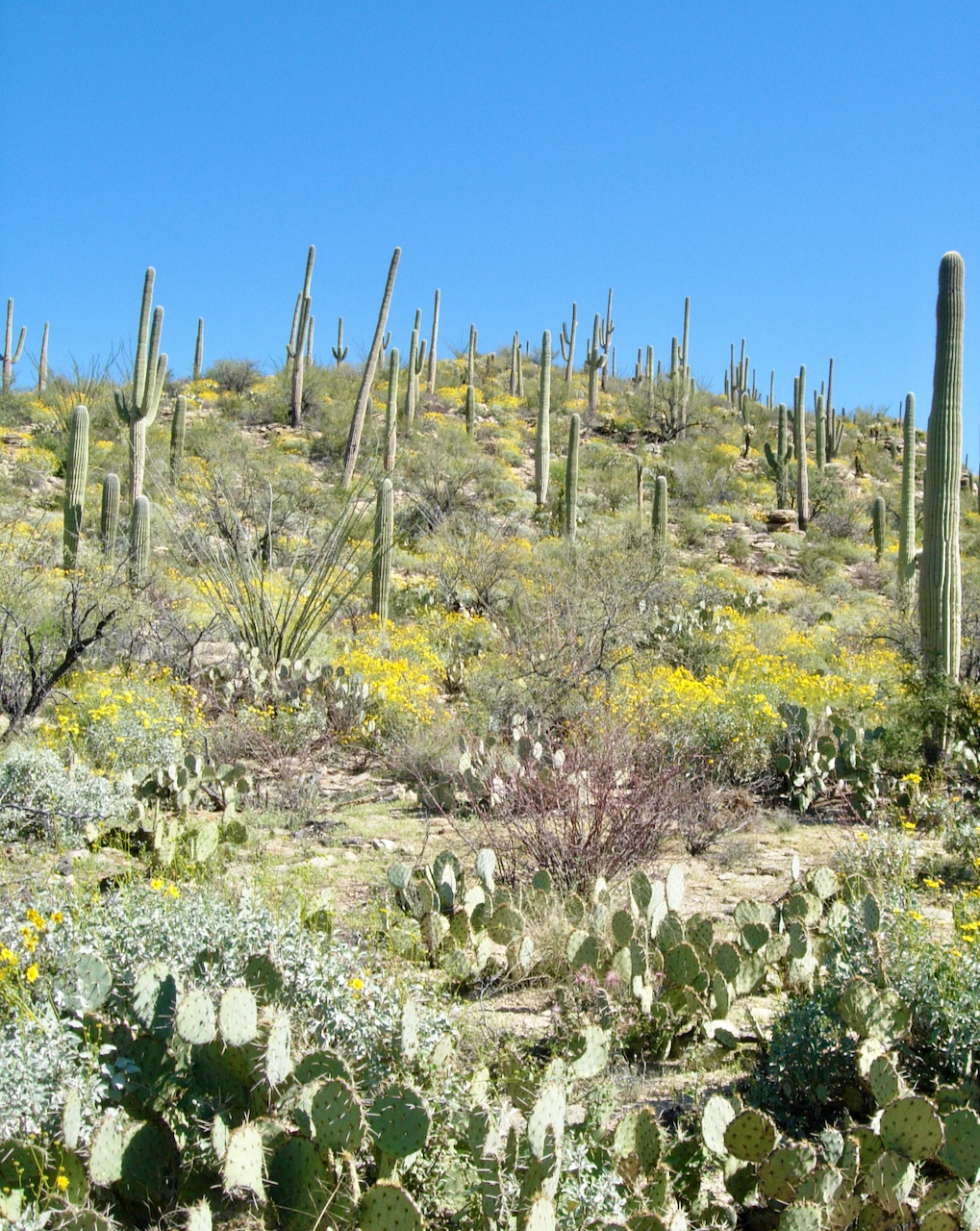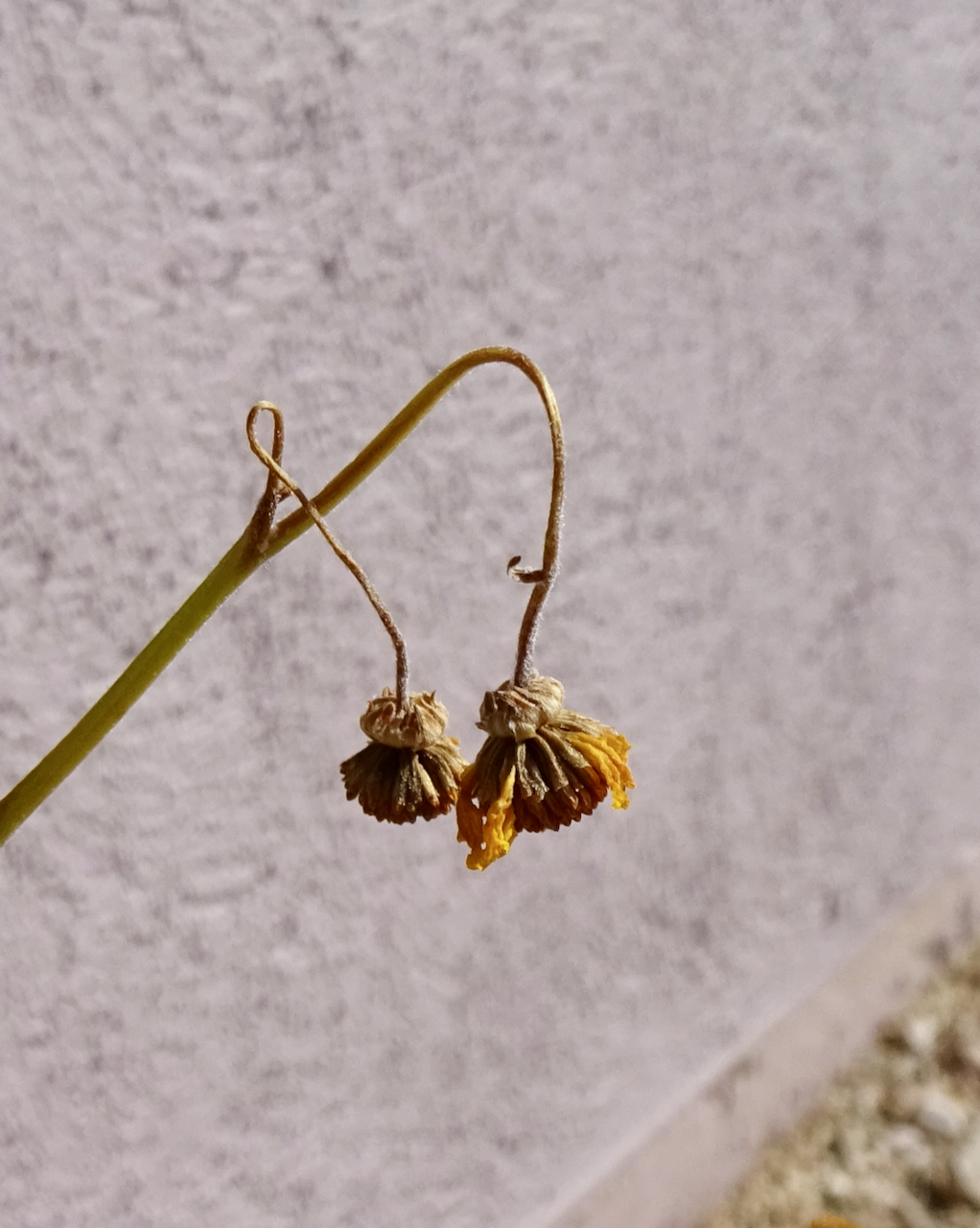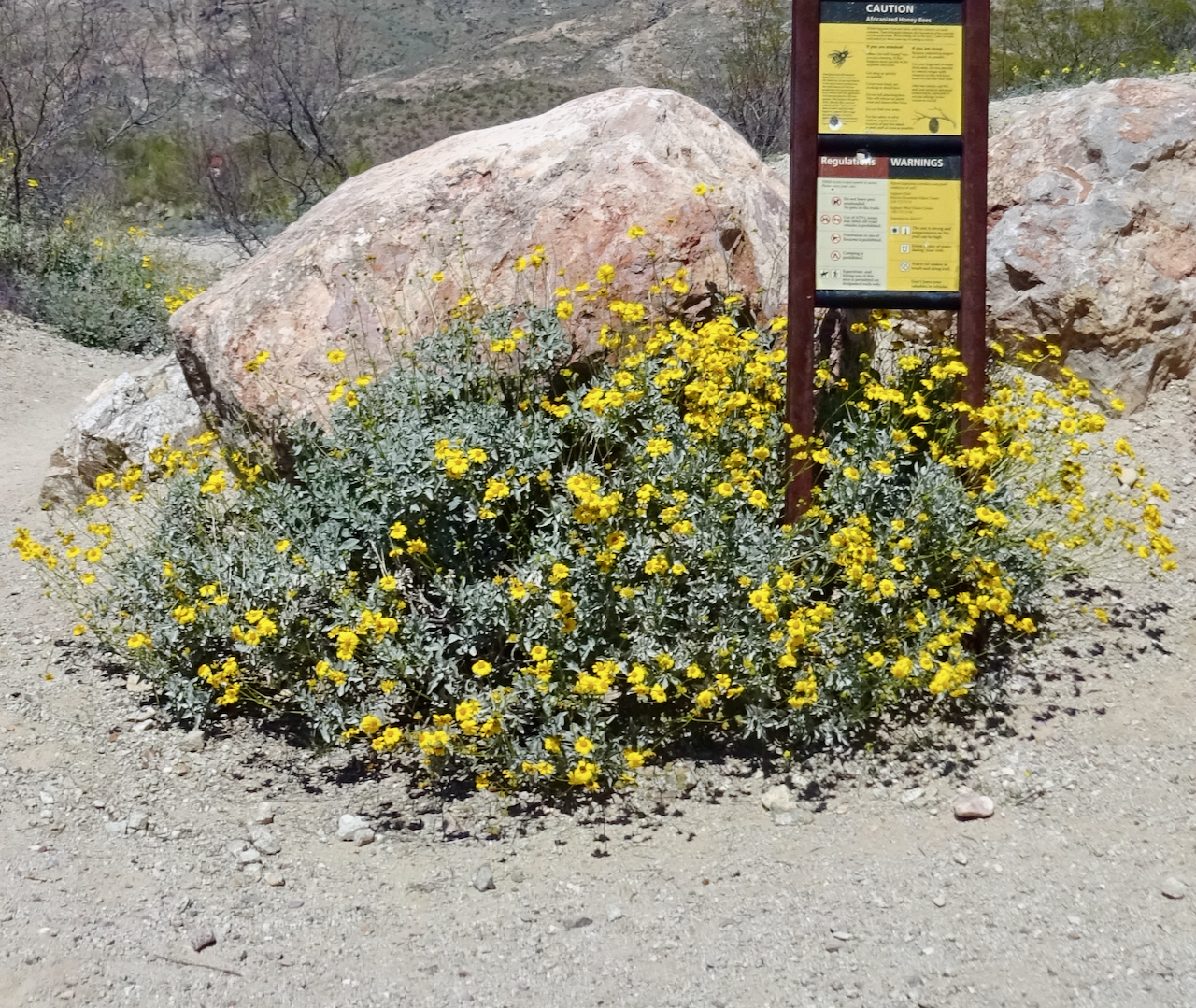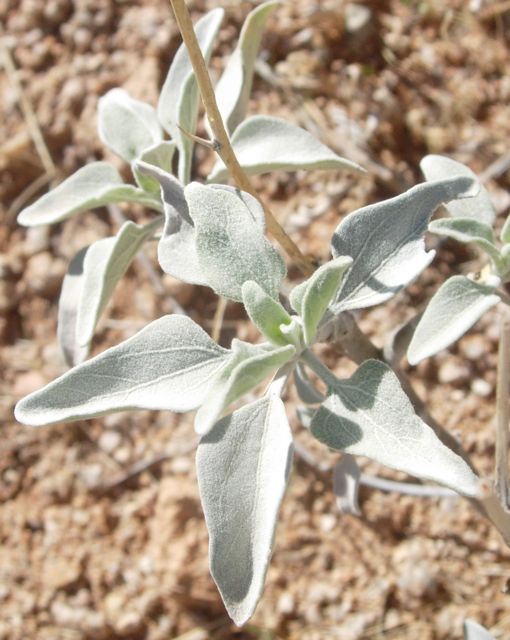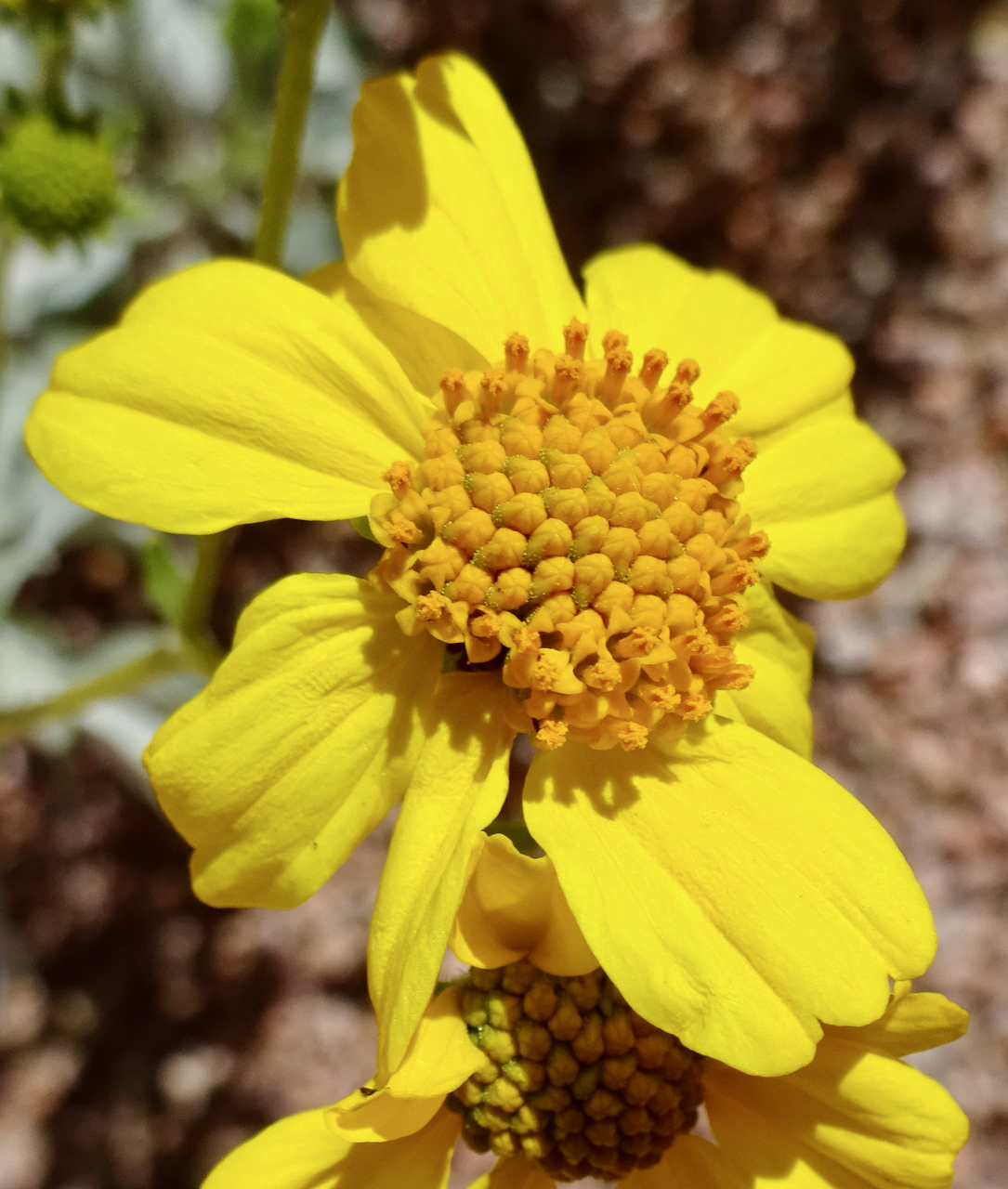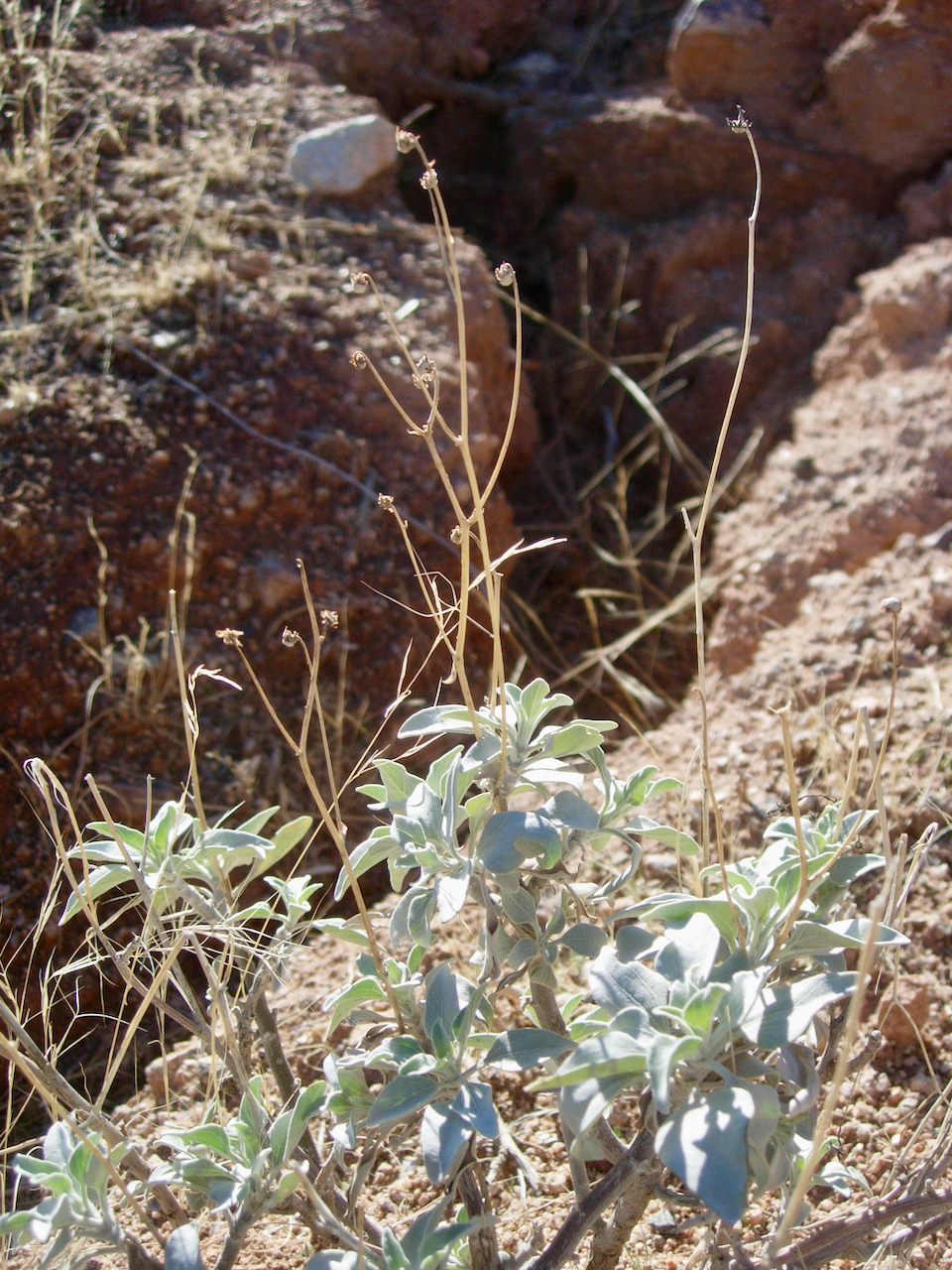Brittlebush, incienso
Encelia farinosa
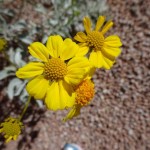
About the Plant
This perennial native plant grows abundantly on the lower hillsides around Tucson. The yellow daisy flowers are showy, appearing mainly in spring, but as early as November if rains are ample.
Brittlebush flowering on a hillside at Sabino Canyon (Tucson) on March 6, 2016.
The silvery-white-green leaves may disappear in the hot, dry summer months or after a frost, leaving bare stems. If winters are cold (15°F), the plant may die to ground. A sudden cold snap when flowering can cause the flowers to droop.
Drooping flowers after a sudden freeze in January 2020.
Grow brittlebush in full sun and well-drained soils. Southern and western slopes are its natural habitat and it can be used for erosion control. Irrigation during the hottest part of the summer will help retain leaves. To improve appearance remove flower stalks just above a leaf after flowering. If plant is cold-damaged, wait until new growth appears before pruning. If plant becomes tall and lanky, cut back almost to the ground to rejuvenate.
Wildlife value: the flowers provide nectar for butterflies. Birds eat the seeds.
More Information
Horticultural information from ASU
Technical botanical description from SEINet
In books:
Native Plants for Southwestern Landscapes by Judy Mielke, page 134.
Perennials for the Southwest by Mary Irish, page 134.
ID Characteristics
This plant is in the Asteraceae - the aster family.
Brittlebush has a rounded form. It typically grows to 2-3 feet tall in the wild but to 5 feet with irrigation.
The triangular, alternate leaves are densely covered with white hairs. Without irrigation the leaves are small (2 inches) and silvery-white (shown above). Irrigated plants may have 4 inch leaves that are much greener because the hairs are spaced more widely.
Brittlebush flowers, 1.5-2 inches in diameter, are the typical "daisy" found in the Aster family (Asteraceae). Both the center disc flowers and the outer ray flowers are yellow. In the photo above, the outer flowers are beginning to open while the flowers in the center of the disc are still in bud.
Brittlebush fruit is not showy, looking somewhat like sunflower "seeds" (see photo of wilted flower to left). The flower stalks can reach to 10 inches above the foliage, resulting in a somewhat messy look after flowering. Simply cut the flower stalks off, just above a leaf.
